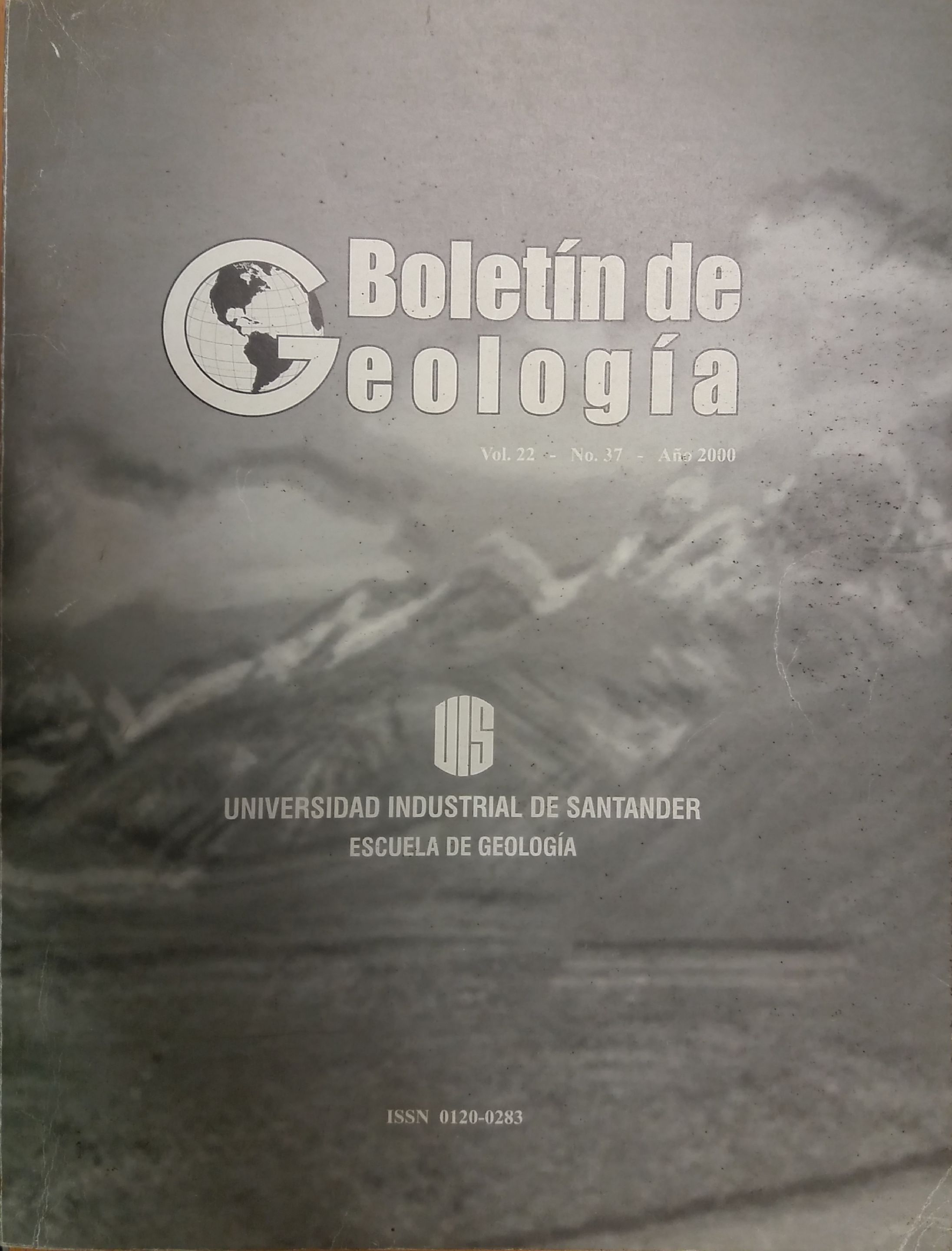Análisis de variables morfométricas de Toxaster roulini Agassiz (Echinoides: Toxasteriidae) de la Formación Rosa Blanca, municipio de Zapatoca (Santander, Colombia)
Published 2000-07-03
Keywords
- Toxaster roulini,
- Fossilization,
- growth,
- Rosa Blanca Formation,
- Paleontology
How to Cite
Abstract
In the outcroping sequence of the Rosa Blanca Formation on the highway Zapatoca - the Platanalito Mines 188 specimens of Toxaster roulini Agassiz of the Aptiano (Camacho, 1979) were gathered directly from the strata that contained them. The respective measurements of the variable morphometrics of the collected specimens of Toxaster roulini Agassiz were carried out: long 1, long 2, width, high, high anus, distance of the mouth, with the purpose of evaluating the type of growth of these individuals and the influence of this variables in their deformation during the fossilization process. These data were processed applying lineal regressions and correlationships using the program STATISTICA version 4.0. In the sampling place the individuals that prevailed (74.4%) between 20 and 33 mm in length, between 17 and 30 mm in width, and between 11 and 18 mm in height, showing this way that this is the size common of the sampling population. The variables high anus and distance of the mouth constituted specific areas that were not modified during the growth of the individuals, which confirms from the low correlationship values that present these two variables morphometrics with the other ones. The results of the regressions and correlationships indicate that the T. roulini growth is isometric and alteration exists in the variable height very probably induced by the pressure of the superior strata during the fossilization process. We thinks about a hypothesis for the distribution in the habitat of T. roulini Agassiz in which the individuals of smaller sizes inhabited the surface of the marine bottom and the biggest individuals were totally buried in the marine bottom, based on the position of the anus for the first one the anus it is located bellow half of each individual's total height and for the biggest the anus it is located above half of the total height of these.
Downloads
References
Nichols, D. 1959a. Changes in the Chalk heart-urchinMicraster interpreted in relation to living forms, Philos.Trans. Roy. Soc. London, B, nº 242, pp. 347 - 437.Nichols, D. 1959b. Mode of life and Taxonomy inirregular sea- urchins. System. Assoc., nº 3, pp. 61 - 80.
Raup, M. R. y Stanley, M. S. 1978. Principios dePaleontología. Editorial Ariel. Barcelona. Pp 90
Zar, H. J. 1996. Bioestatistical Analysis. Third Edition.Prentice Hall. New Jersey. Pp 317 - 371
